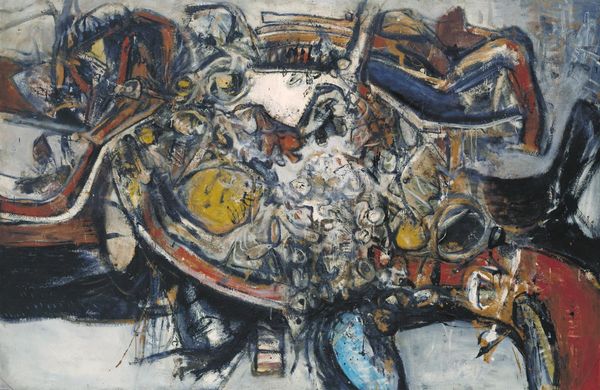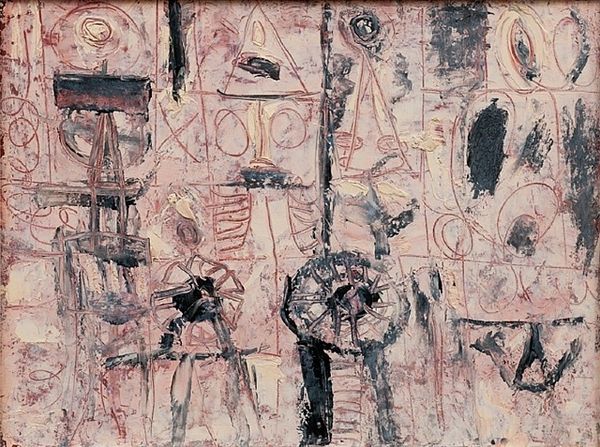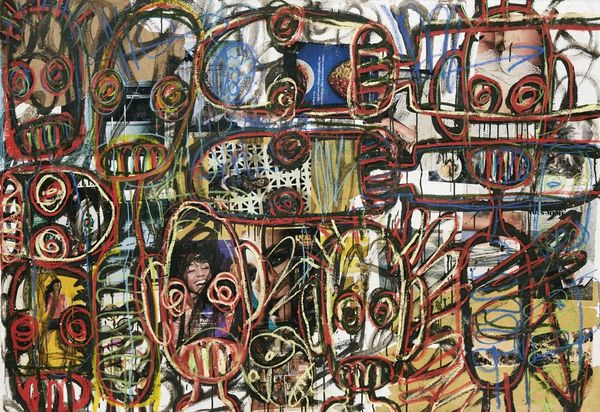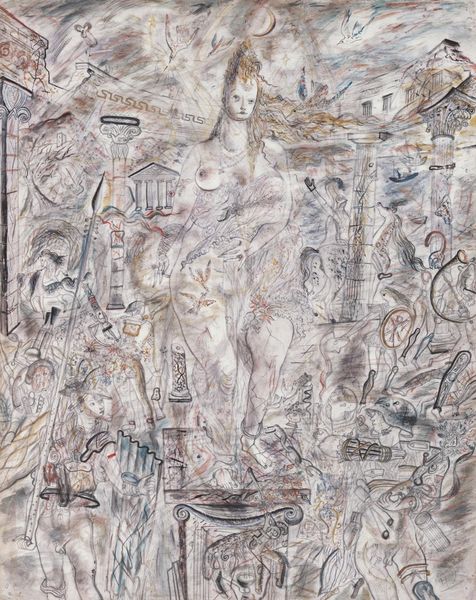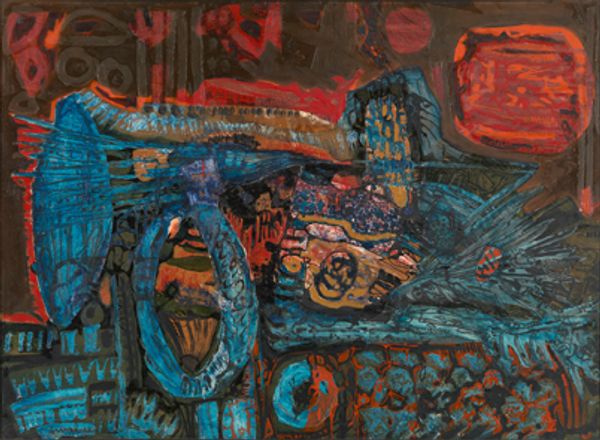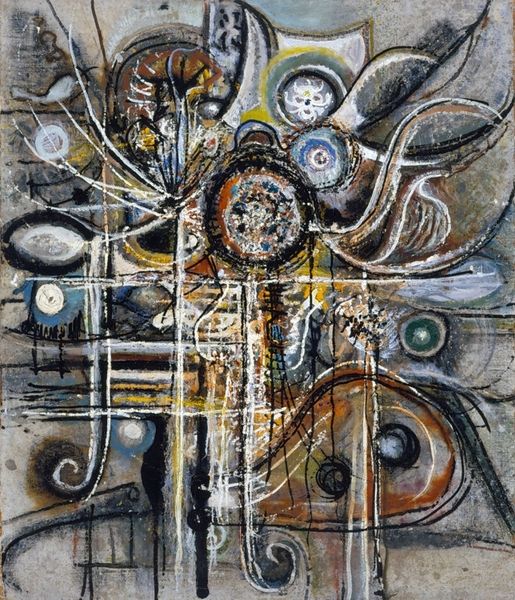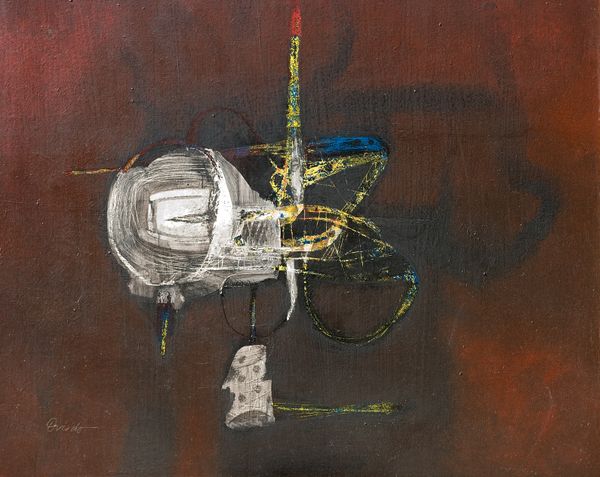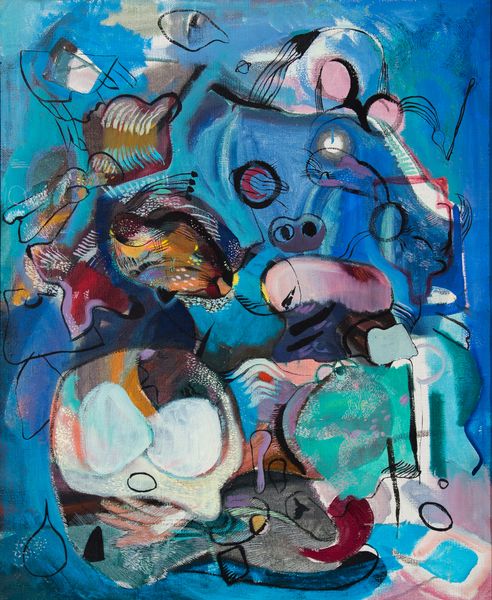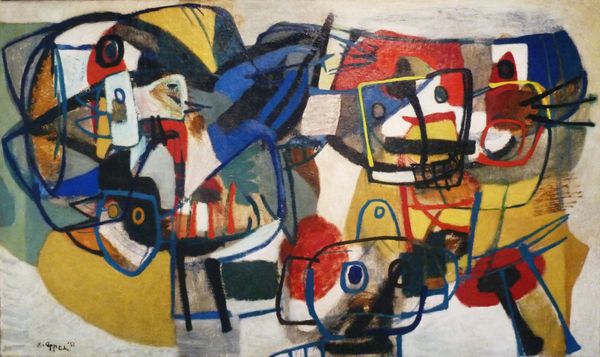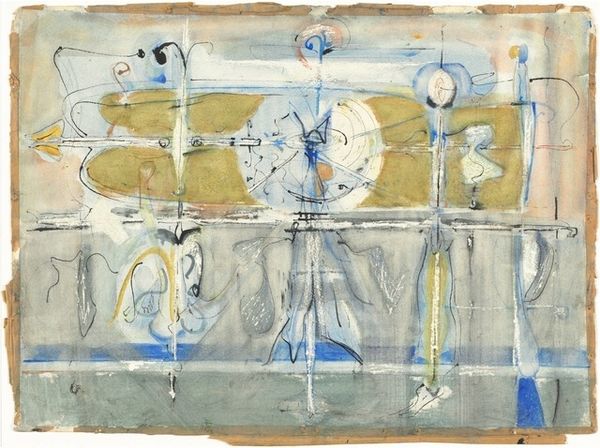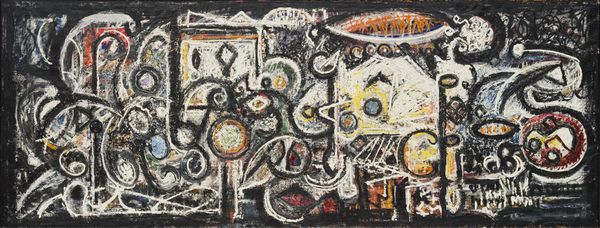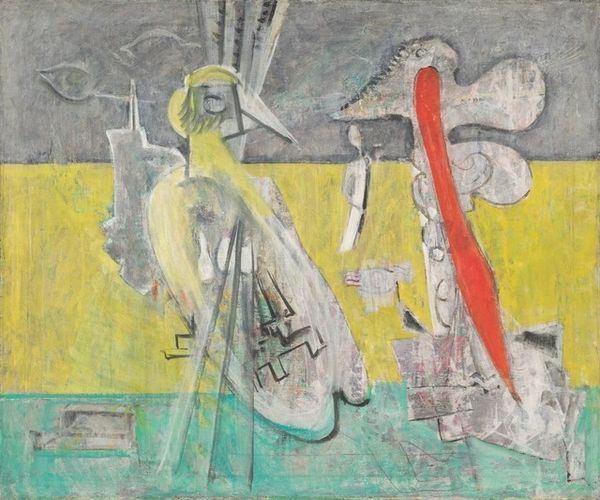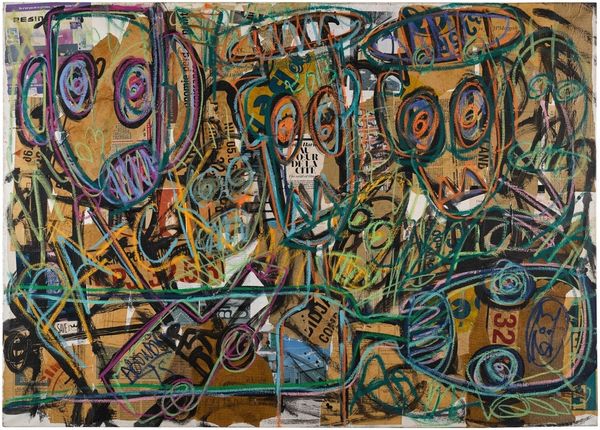
Dimensions: support: 2337 x 3200 mm frame: 2445 x 3211 x 38 mm
Copyright: © Alan Davie | CC-BY-NC-ND 4.0 DEED, Photo: Tate
Editor: So, here we have Alan Davie's "Sacrifice," a truly monumental canvas, brimming with symbolism. It feels almost chaotic, yet strangely balanced. What strikes you most when you look at it? Curator: Its raw energy, certainly. Davie seems to be channeling something primal, wouldn't you agree? He isn't just painting a picture but unleashing a torrent of feeling, almost like a shamanistic ritual. The blues deepen the mystery. What do you make of those shield-like forms? Editor: They feel like a defense, or perhaps a representation of opposing forces in this sacrifice. Curator: Exactly! Davie was deeply interested in Eastern philosophy. Perhaps he's showing us the duality inherent in any act of giving, or taking. I find a sort of peace, and maybe even resolution, in the chaos. Editor: I definitely see that duality now. It's as though Davie is daring us to confront the complexities of existence itself. Curator: And in that confrontation, perhaps, a kind of liberation. It's a powerful offering.
Comments
Join the conversation
Join millions of artists and users on Artera today and experience the ultimate creative platform.
tate 6 months ago
⋮
By the mid-1950s recognisable symbols were appearing alongside the chance marks in Davie’s paintings. As in this painting, they did not convey specific meanings. Instead Davie considered them to be ‘primordial symbols which have many and varying meanings at different times but unknown to mankind’. Although the central passage of this painting suggests disembowelled entrails, Davie maintains that the title was applied retrospectively. He equated sacrifice with ‘something cruel, noble, frightful, transcendent: a link between life and death, personal and universal’. Gallery label, September 2004
